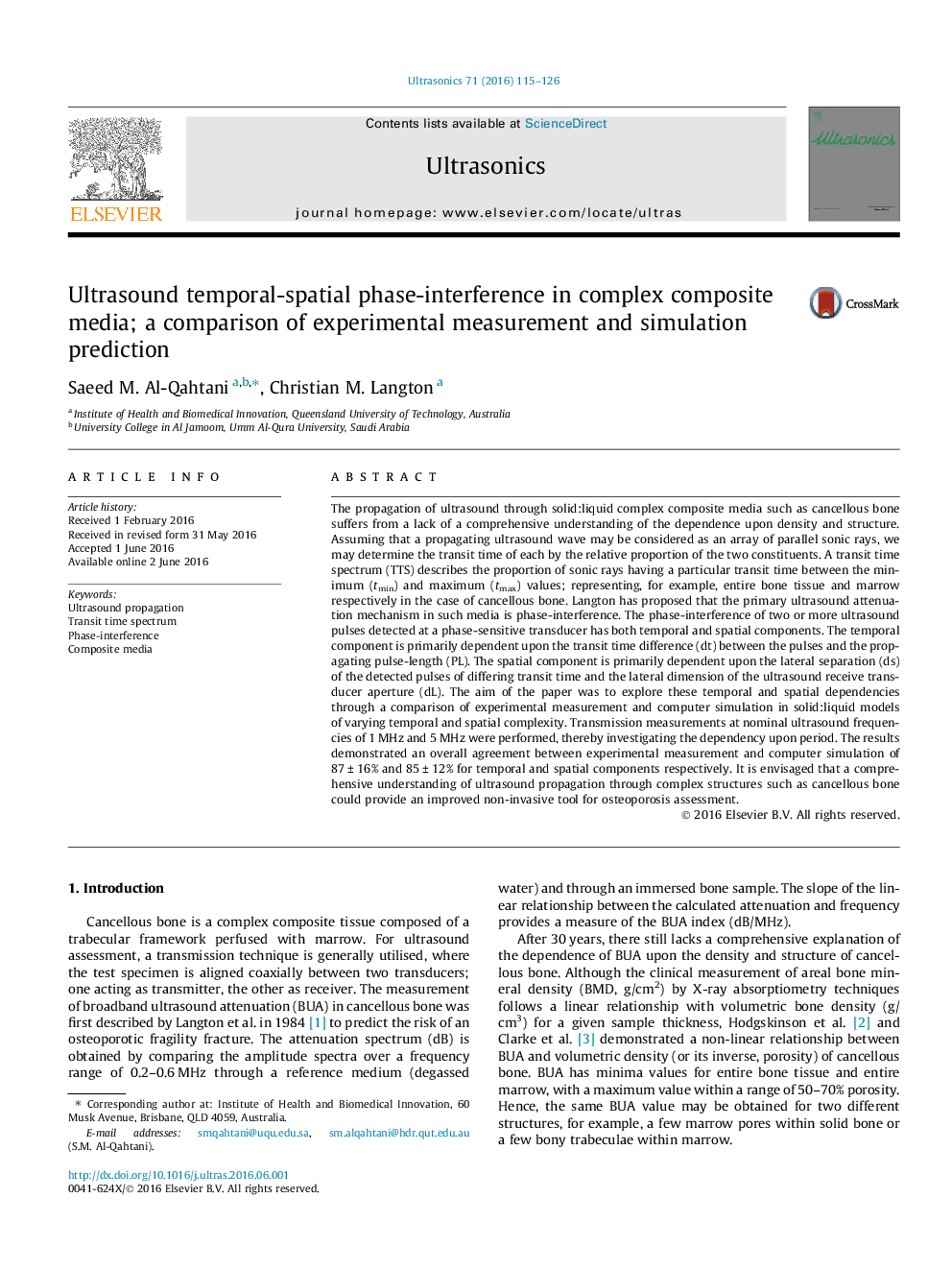| Article ID | Journal | Published Year | Pages | File Type |
|---|---|---|---|---|
| 1758545 | Ultrasonics | 2016 | 12 Pages |
•Ultrasound propagation in complex composites considered as parallel sonic-ray array; transit-time (TT) determined by structure-independent constituent proportions.•Phase-interference (PI) of two sonic-rays has temporal and spatial components.•Temporal PI occurs when sonic-ray TT less than propagating ultrasound pulse-length.•Spatial PI occurs when lateral-separation of sonic-rays within receiver aperture.•Experimental-Simulation agreement was 87% for temporal-PI and 85% for spatial-PI.
The propagation of ultrasound through solid:liquid complex composite media such as cancellous bone suffers from a lack of a comprehensive understanding of the dependence upon density and structure. Assuming that a propagating ultrasound wave may be considered as an array of parallel sonic rays, we may determine the transit time of each by the relative proportion of the two constituents. A transit time spectrum (TTS) describes the proportion of sonic rays having a particular transit time between the minimum (tmin) and maximum (tmax) values; representing, for example, entire bone tissue and marrow respectively in the case of cancellous bone. Langton has proposed that the primary ultrasound attenuation mechanism in such media is phase-interference. The phase-interference of two or more ultrasound pulses detected at a phase-sensitive transducer has both temporal and spatial components. The temporal component is primarily dependent upon the transit time difference (dt) between the pulses and the propagating pulse-length (PL). The spatial component is primarily dependent upon the lateral separation (ds) of the detected pulses of differing transit time and the lateral dimension of the ultrasound receive transducer aperture (dL). The aim of the paper was to explore these temporal and spatial dependencies through a comparison of experimental measurement and computer simulation in solid:liquid models of varying temporal and spatial complexity. Transmission measurements at nominal ultrasound frequencies of 1 MHz and 5 MHz were performed, thereby investigating the dependency upon period. The results demonstrated an overall agreement between experimental measurement and computer simulation of 87 ± 16% and 85 ± 12% for temporal and spatial components respectively. It is envisaged that a comprehensive understanding of ultrasound propagation through complex structures such as cancellous bone could provide an improved non-invasive tool for osteoporosis assessment.
